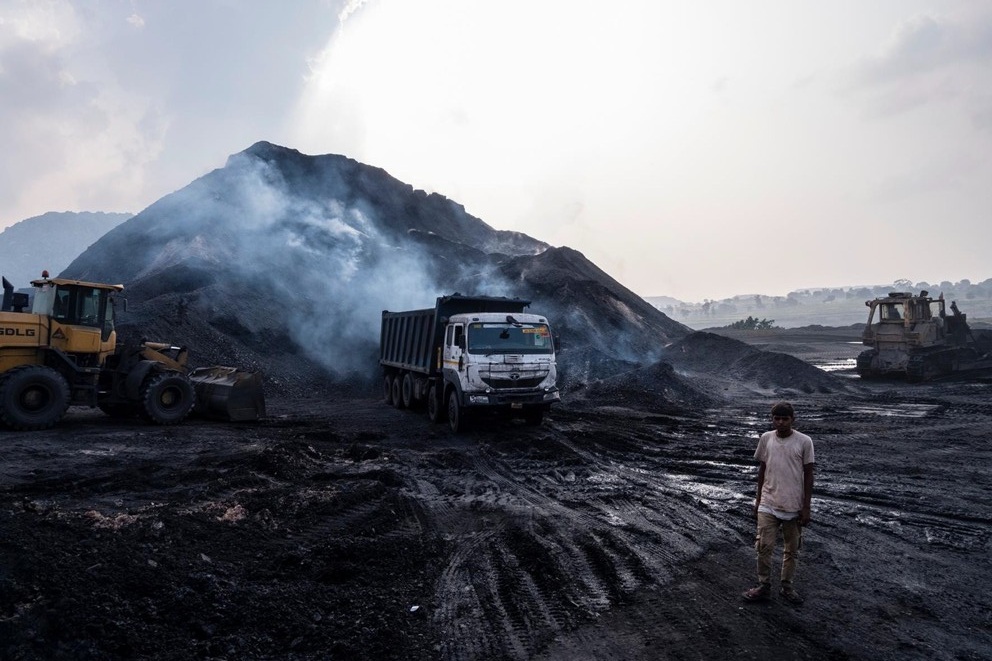
Echoes of the Mines
Stories from the Fringes
by Ishan Banerjee
This project is supported by the Danish Siddiqui Foundation under the DSF Rising Reporters initiative and may be published under a Creative Commons license with appropriate credit.
All images are © Ishan Banerjee
Introduction
This visual story is an exploration of the fringes of the mines, where livelihoods are intricately tied not to the act of extraction itself but to the sprawling ecosystem it creates. The landscapes of Jadugora, Jharia, and Chatra district tell a tale of contrasts—of communities striving to sustain themselves in the shadow of an industry that both sustains and burdens them. Here, the mines dominate the horizon, yet their impact stretches far beyond the pits, shaping lives in ways that are both visible and invisible.
This work is rooted in countless meaningful interactions with individuals whose lived experiences bring this narrative to life. From the tea vendor who sets up his stall before dawn to serve miners, to families salvaging coal remnants at the edge of mining sites, to small business owners who rely on the ebb and flow of mining operations for survival—each story offers a unique glimpse into the ways in which these communities adapt to their circumstances. These voices, often overlooked in the broader discourse of mining, act as the lodestar for this visual journey, guiding it with their resilience, vulnerability, and humanity.
Through these interactions, the project seeks to uncover the nuanced dependencies that define these communities. It examines how informal economies thrive on the periphery of the mining industry, how families navigate shifting dynamics in the face of environmental degradation, and how the mines shape not just livelihoods but identities and aspirations. By delving into these stories, this work aims to go beyond the surface of the mines to reveal the deeply intertwined relationship between land, labor, and survival.
At its core, this project is a testament to the resilience of people living in the shadow of extraction—a call to listen to the voices of those whose lives are shaped by forces beyond their control, and to see the human side of an industry often reduced to numbers and headlines. Through poignant imagery and layered narratives, it seeks to foster empathy, understanding, and recognition of lives that deserve to be seen and heard.
Approach
My time spent within the communities living on the fringes of the mines provided a deeper understanding of the complex socio-economic fabric that binds them to the mining industry. These interactions highlighted the intricate ways in which informal economies thrive around mining operations, creating livelihoods that, while unregulated, are vital for survival.
Observing and engaging with these communities revealed the nuanced dependencies they navigate daily—whether through scavenging coal for personal use or running small roadside businesses that cater to workers from the mines.
This project employs a combination of participant observation and narrative documentation to explore how formal and informal systems intersect within these spaces. By immersing myself in the day-to-day lives of individuals in Jadugora, Jharia, and Chatra, I sought to capture the lived experiences that define their realities.
These communities operate in a liminal space where survival often involves straddling legality and necessity, a dynamic that reflects larger systemic inequalities and gaps in policy.
The approach also involved documenting the environmental and health repercussions of mining activity, which shape not only economic practices but also social and familial structures. By understanding how these repercussions are articulated in the voices of those most affected, this work contributes to a growing body of knowledge that critiques oversimplified narratives of development and economic growth.
This visual story emphasizes the importance of amplifying the voices of these communities, recognizing the resilience and ingenuity they demonstrate in the face of adversity. It seeks to challenge dominant narratives of progress by uncovering the everyday realities of those living in the shadow of extraction.
Chapter 1 : Narratives From The Field | Stories from Jadugora
Jadugora, a small town nestled in Jharkhand, stands at the intersection of beauty and burden. Known as the site of India’s first uranium mine, its picturesque forests and villages mask the invisible dangers that have plagued the community for decades. The land, once fertile and nurturing, now carries the weight of radiation and industrial scars, shaping the lives of its people in profound ways. In the heart of Jadugora, stories unfold that reflect the resilience and struggles of its residents. Families here live in the shadow of uranium tailing ponds—vast, toxic wastelands of radioactive slurry. Locals speak of strange illnesses, unexplained deformities, and a growing list of health concerns. Villagers recount how children born with abnormalities and adults suffering from respiratory and digestive ailments have become an unsettling norm. One of the most haunting tales comes from Sanjay Gope, a young man from Bango village, who once ran freely through the fields as a child. Over the years, his body betrayed him, weakened by seizures that left him immobile. His family lives in quiet despair, connecting his condition to the uranium mining operations that surround them. The narratives from Jadugora are not just about health and environment but also about cultural loss. For years, villagers believed certain areas of the forest to be cursed, blaming ‘evil spirits’ for miscarriages and dizziness.

As awareness grew, they connected these occurrences to the radiation and toxic runoff from the tailing ponds. What was once folklore is now understood as a grim reality shaped by industrial activity. The narrative of Jadugora is one of adaptation, resistance, and survival as told by its people. There, daily existence serves as a tribute to the tenacity of a community bearing the unseen burden of advancement. Their experiences, which include demands for responsibility and change in addition to descriptions of pain, must be heard. The narrative of Jadugora is one of adaptation, resistance, and survival as told by its people. There, daily existence serves as a tribute to the tenacity of a community bearing the unseen burden of advancement. Their experiences, which include demands for responsibility and change in addition to descriptions of pain, must be heard. The villages closest to the tailing ponds are the most severely impacted. The tailings’ dust drifts through these towns throughout the dry season. The radiation from the tailing ponds and the tainted water sources, according to villager complaints, are to blame for their suffering. Radioactive waste leaks into local creeks and rivers during the monsoon season, exposing communities to more internal radiation when they bathe and drink the tainted water and fish in the nearby ponds.
For years, the desperate impoverished people who live in scattered communities in the shadow of these mines have been plagued by a mystery: what is causing the wasting illnesses that are deforming and murdering so many of their children? For a long time, local villagers believed that certain forest areas were cursed—an evil gaze could affect a woman passing through the area, causing her to have a miscarriage or causing people to feel dizzy. These areas coincided with forest spaces around tailing ponds. In cultural translation, the regions surrounding tailing ponds became infested with ‘evil spirits.’ However, as people became more enlightened, they connected their difficulties to mining activities.
The health concerns associated with uranium mining disproportionately impact indigenous people in and near the uranium mining operations region, with up to 50,000 persons at risk, according to the court.

Sanjay Gope, a young man of approximately 21-22 years, lives a life profoundly altered by circumstances beyond his control. As a child, Sanjay was able to run, play, and move freely like any other child in the village. However, over time, his arms and legs began to weaken, and he lost much of his mobility due to recurring seizures. What once seemed like an ordinary childhood quickly turned into a struggle for normalcy as his condition worsened, leaving him largely dependent on others for support. Sanjay’s story is one among many in the villages surrounding uranium mining operations in Jharkhand, where health concerns have been a constant source of fear and frustration for residents. The villagers have long voiced their concerns, denouncing the adverse health impacts that they believe are caused by radiation exposure and contamination resulting from uranium mining activities. Complaints about birth defects, chronic illnesses, and neurological disorders, especially in children, are alarmingly common in the region. Despite these widespread grievances, Uranium Corporation of India Ltd. (UCIL), the state-run entity responsible for uranium mining in the area, maintains its stance that the operations are safe. UCIL asserts that radiation levels are under control and pose no significant health risks to the local population. This official narrative, however, is sharply at odds with the lived experiences of families like Sanjay’s and the broader community. Villagers report numerous cases of unexplained illnesses, rising instances of cancer, and children born with congenital disabilities. Many attribute these conditions to mining activities, which release harmful radioactive particles and contaminate the surrounding areas’ air, water, and soil. For families like Sanjay’s, these health risks are not abstract statistics but a grim reality that shapes their daily lives, with limited access to medical care or financial resources to address their conditions.
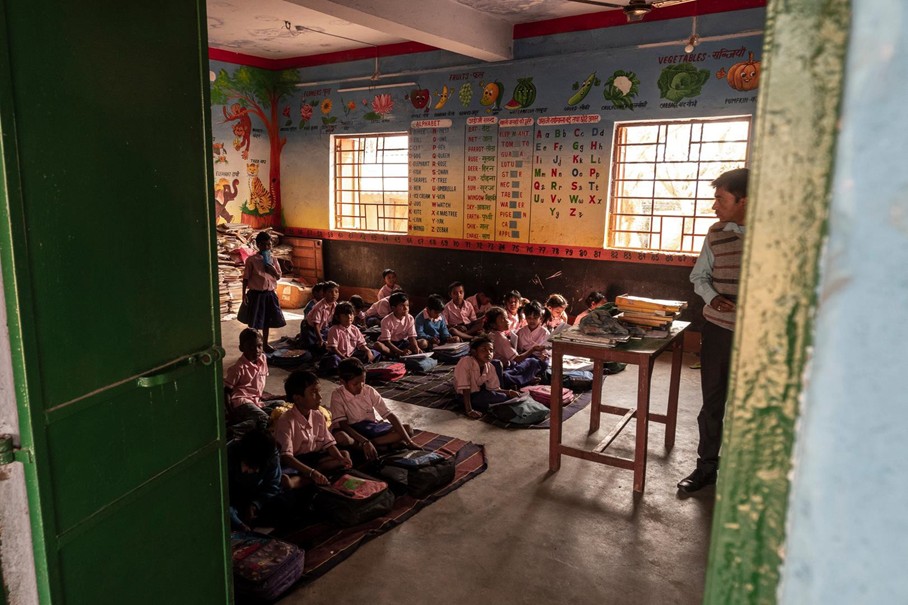
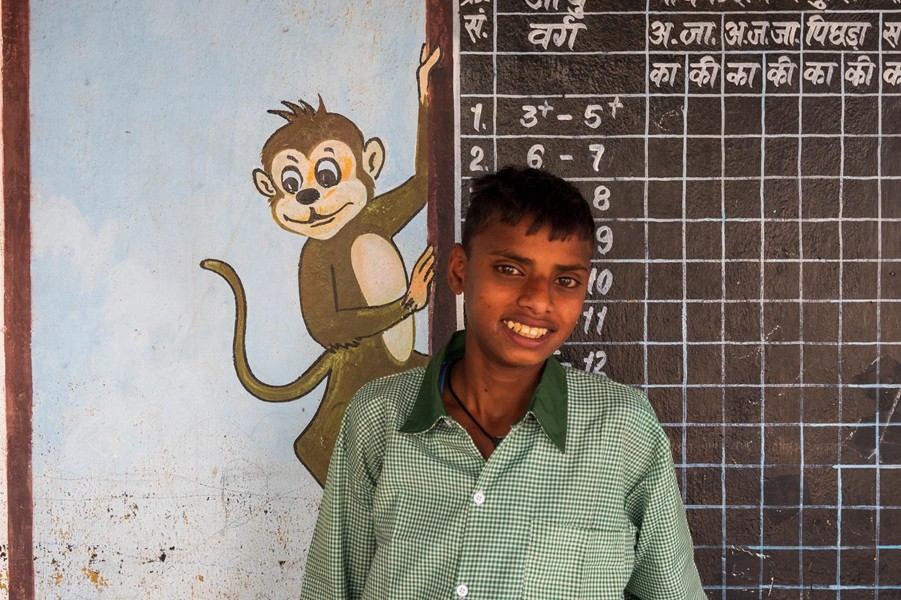

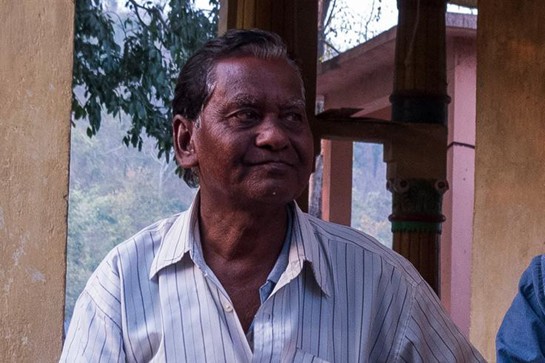
Chaatua Das is an active member of the Jharkhandi Organisation Against Radiation (JOAR), a grassroots organisation dedicated to increasing awareness about radiation’s catastrophic effects and advocating for vital legislative changes. Chaatua’s advocacy stems from their community’s common challenges as well as the great loss they have experienced. Chaatua’s journey as an advocate is marked by immense personal sacrifice. Their daughter, born with disabilities on 4th September 2012, tragically passed away, a loss that Chaatua links to the harmful effects of radiation exposure from uranium mining in the region. This painful experience became a turning point, driving Chaatua to fight not just for their family but for countless others who continue to endure the ecological, medical, and social fallout of uranium mining activities. Through their work with JOAR, Chaatua amplifies the voices of those impacted, many of whom have given their lives or suffered irreparable losses in the fight for justice and recognition. Chaatua’s powerful words often remind others of the sacrifices made: “हमन ों देश के लिए मर रहे हैं, आप बडे अपने ि ग मौज करें ,” reflecting both the grief and the unyielding resolve of a community that bears the weight of these sacrifices for the nation. Chaatua Das stands as a testament to resilience and determination, tirelessly working to ensure that the voices of Jharkhand’s affected communities are heard, their struggles acknowledged, and their lives valued. Their activism continues to shed light on the hidden costs of industrial progress, advocating for a safer, more equitable future for all.
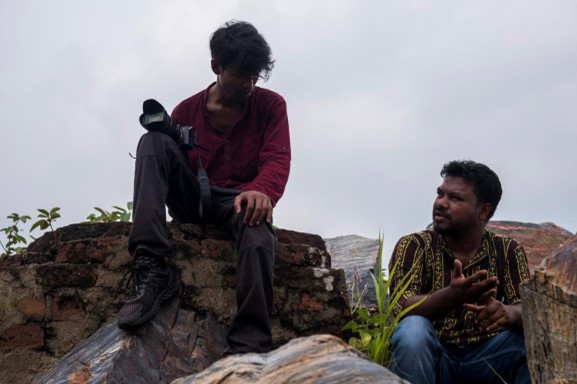
Ashish Birulee is an Adivasi environmentalist, independent photojournalist, and writer from the Ho community of Jadugoda in Jharkhand, India. In 2016, he co-founded Adivasi Lives Matter (ALM), an organization dedicated to conducting training programs for Adivasi youth, empowering them to become writers and content creators of their own narratives. Deeply connected to his community’s struggles, he has devoted his life to advocating for environmental justice and elevating the voices affected by uranium mining. Inspired by his father, Ghanshyam Birulee, who founded the Jharkhandi Organisation Against Radiation (JOAR) in 1998 to combat radiation issues, he highlights the imposition of tailing ponds on locals. Today, with around five to six members, JOAR is dedicated to seeking justice for the residents of Jadugoda, although local workers at UCIL remain skeptical of their efforts. Ashish developed a strong sense of activism from an early age. Growing up in Jadugoda, home to India’s first uranium mine, he witnessed firsthand the ecological destruction and health crises caused by uranium mining. These experiences fueled his commitment to shedding light on the long-term social, medical, and environmental consequences faced by his community and others in similar circumstances. Ashish is a core member of the Jharkhandi Organization Against Radiation (JOAR), a grassroots movement dedicated to raising awareness about radiation’s harmful effects and advocating for policy changes. In recognition of its efforts, JOAR received the prestigious Nuclear Free Future Award in 2004. Ashish has continued to carry this legacy forward, using his lens and his words to tell stories that often remain unheard. In addition to his activism, Ashish has shared his insights on global platforms, speaking at events like the International Uranium Film Festival and TEDxRavenshaw University in Cuttack, Odisha. His work combines art and advocacy, painting a vivid and urgent picture of the intersection between environmental issues and indigenous rights. Ashish Birulee’s unwavering dedication to his community stands as a powerful testament to the resilience and resistance of the Adivasi people in the face of systemic environmental challenges.
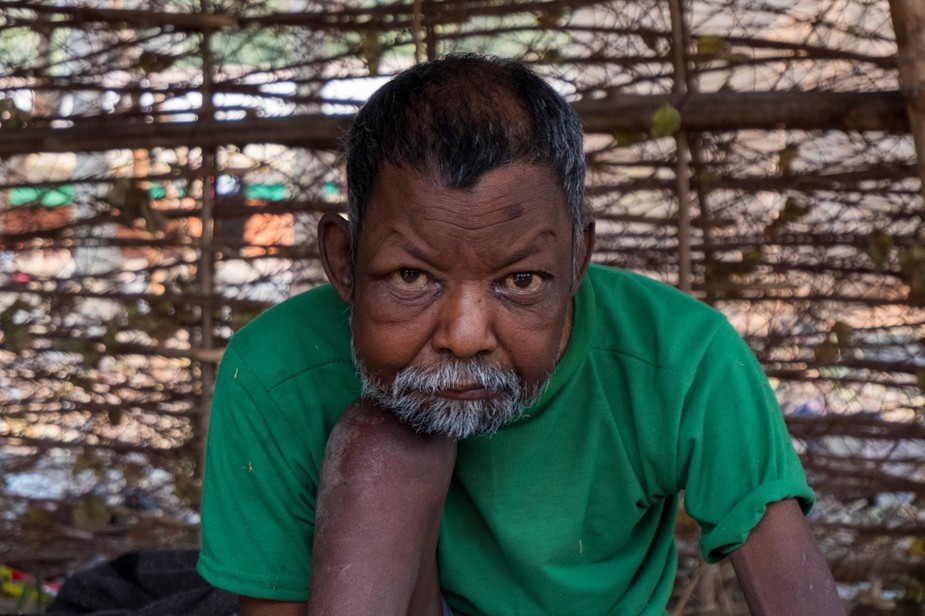
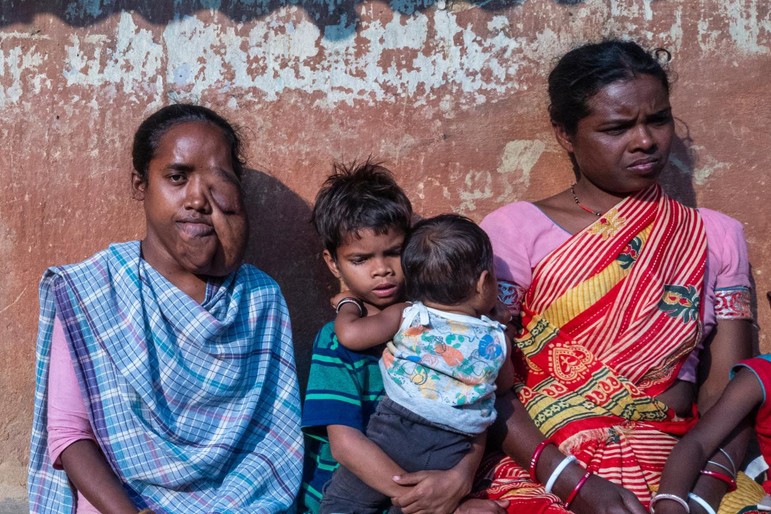
Anamika Oraon, a young girl from a near Narwa Pahar village, carries a visible reminder of the hidden toll of uranium mining. While the right side of her face reflects the curiosity of youth, the left bears a malignant overgrowth of tissue, sagging under its weight. Her condition, stark and haunting, is a testament to the environmental and health consequences faced by her community. Her quiet resilience highlights the human cost of industrial progress and serves as a poignant call for accountability and awareness.

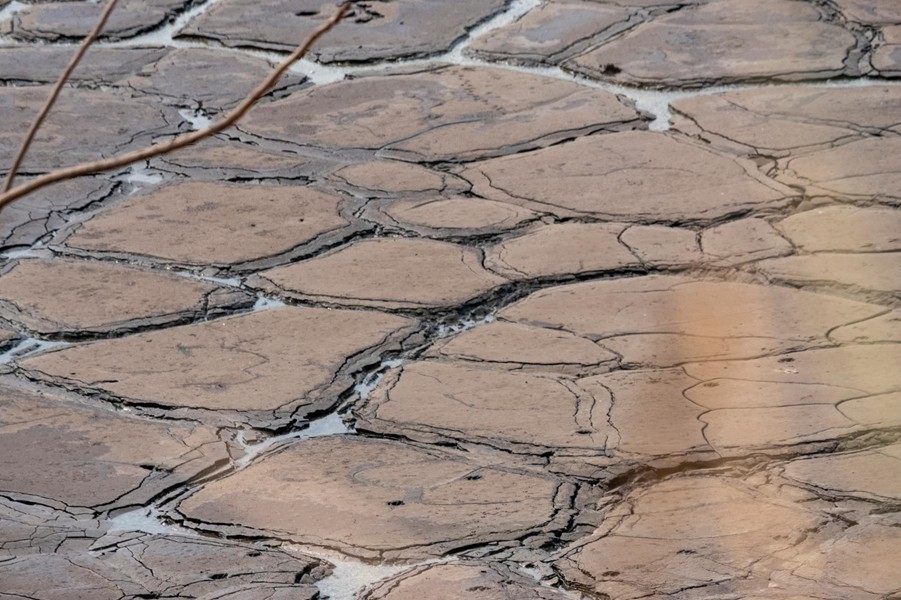
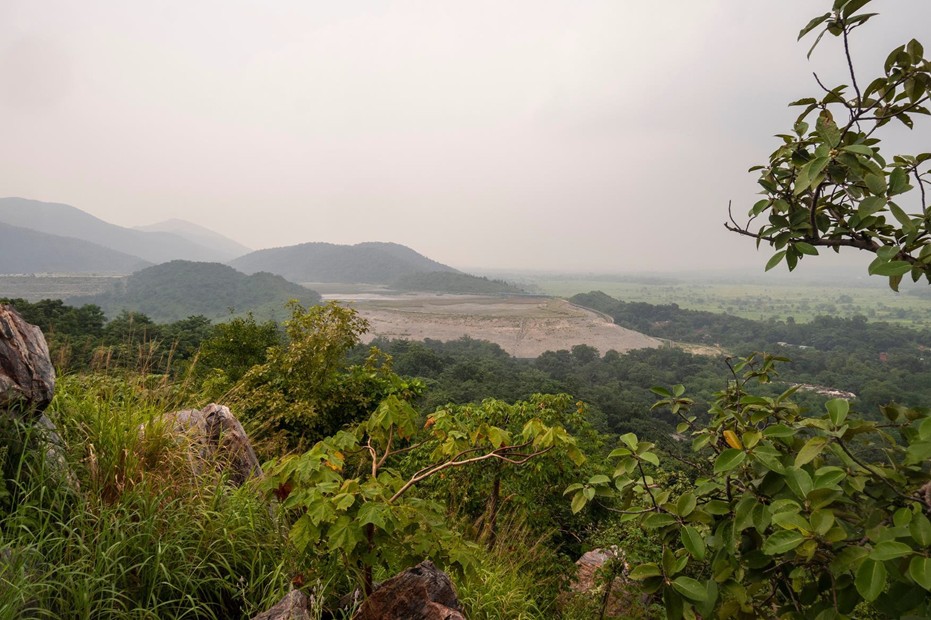
Chapter 2 : Narratives From The Field | Stories from Dhanbad
In the heart of India’s coal capital, Dhanbad, lies the Jharia coalfields, home to the country’s oldest mines and its only reserves of prime coking coal. While these mines fuel the steel industry, they have brought over a century of underground fires and environmental devastation, transforming life in this densely populated region. Villages like Baesbarah, located near the coalfields, are plagued by fires smoldering just beneath the ground. “The soil crackles and splits open, releasing noxious gases and sometimes flames,” says Tara Podo, a local resident. The intense heat has damaged homes, with walls crumbling and even parts of the local mosque sinking into the unstable earth. Despite efforts by Bharat Coking Coal Limited (BCCL) to control the fires and resettle affected families, the situation remains dire. Tara Podo and Vishal Singh recall past mining operations that reignited dormant fires, forcing their communities into an even more precarious existence. Relocation plans, managed by the Jharia Rehabilitation and Development Authority (JRDA), are hampered by disputes over land acquisition and inadequate housing, leaving many families to endure hazardous conditions. Beyond the fires, the health impacts are devastating. Airborne coal dust and toxic gases cause chronic respiratory diseases, such as asthma and pneumoconiosis (Black Lung Disease), with life expectancy in the region reduced by at least a decade. Polluted water further exacerbates health issues, leading to gastrointestinal diseases like Hepatitis. While BCCL has taken steps to mitigate damage, such as mist sprinklers, reverse osmosis water filtration, and tree plantations, the lives of Jharia’s residents remain overshadowed by environmental hazards and health risks. For the people of Dhanbad, hope for a safer future feels distant as they continue to bear the heavy cost of India’s coal industry.

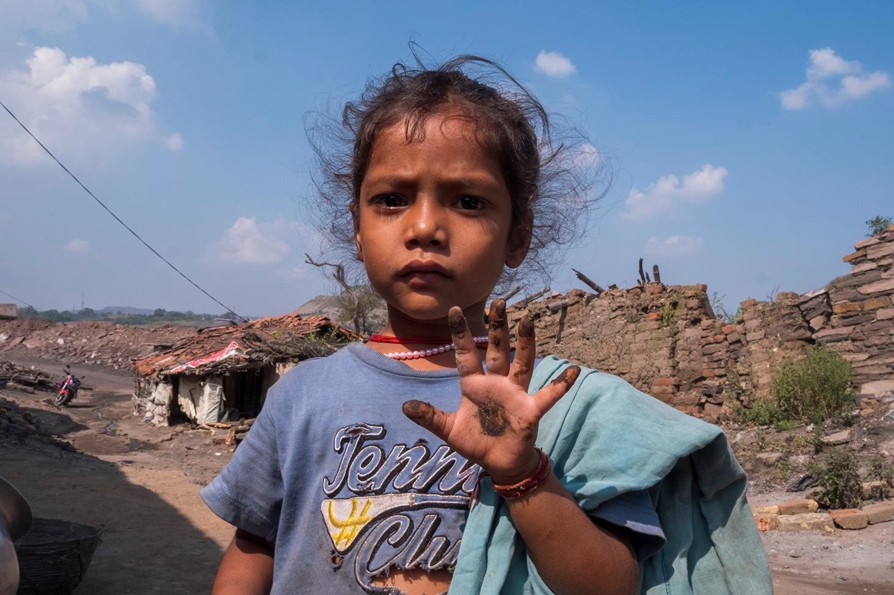
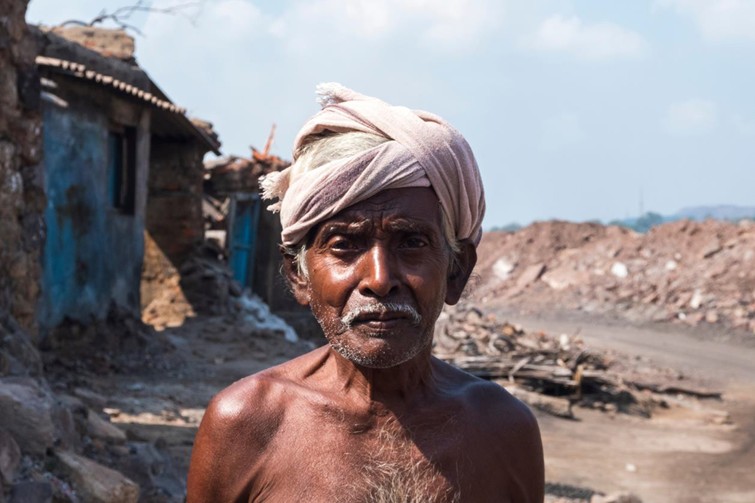
A quick Conversation with an elderly resident of Rajwa Basti, reminisces about his childhood in a village once full of life and greenery. Sitting outside his home, he recalls a time when the air was clean, children played in open fields, and the land provided everything they needed. But things changed with the expansion of coal mining. Tara vividly remembers the arrival of underground fires, the heat seeping through the ground, cracks forming in homes, and the land becoming unrecognizable. “It was like the earth was turning against us,” he says. Now, the vibrant fields of his youth are barren, replaced by scars of mining, a stark reminder of how progress came at the cost of his village’s way of life.
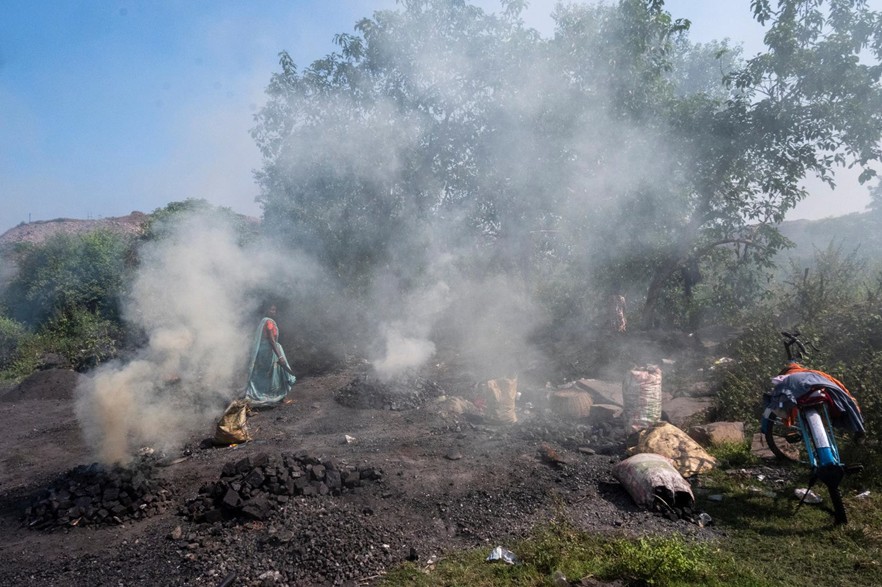
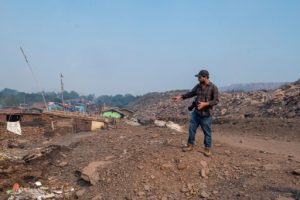
Vishal Kumar Singh is a social documentary photographer with five years of experience capturing life around India’s coalfields. His work focuses on the harsh realities faced by communities living in close proximity to the mines, particularly the laboring class, whose lives are shaped by the coal industry’s demands and dangers. In his ongoing project (The Burning City a photo book on Jharia), Vishal turns his lens toward the Jharia Coalfield, India’s largest and most infamous coalfield, where underground fires have burned for over a century. Known for its high carbon content, Jharia is a major source of harmful emissions such as carbon dioxide, methane, and carbon monoxide, which have left a devastating impact on the health of its residents. Widespread respiratory illnesses, heart conditions, and digestive disorders are common, with contaminated water and air further compounding generational health issues. Vishal’s work also highlights the plight of child laborers, some as young as six years old, who toil in the mines instead of attending school. Beginning their day before sunrise, they dig and collect coal in hazardous conditions, often at the cost of their health and future. The dangers of mining extend beyond disease, as frequent landslides claim lives, leaving families to grieve without compensation or support. Through his evocative photography, Vishal seeks to document these overlooked stories and bring attention to the resilience and struggles of those who endure the unrelenting challenges of life in the coalfields. His work serves as a powerful reminder of the human cost of industrial progress, urging society to see beyond the surface and acknowledge the people living in the shadow of India’s energy demands.
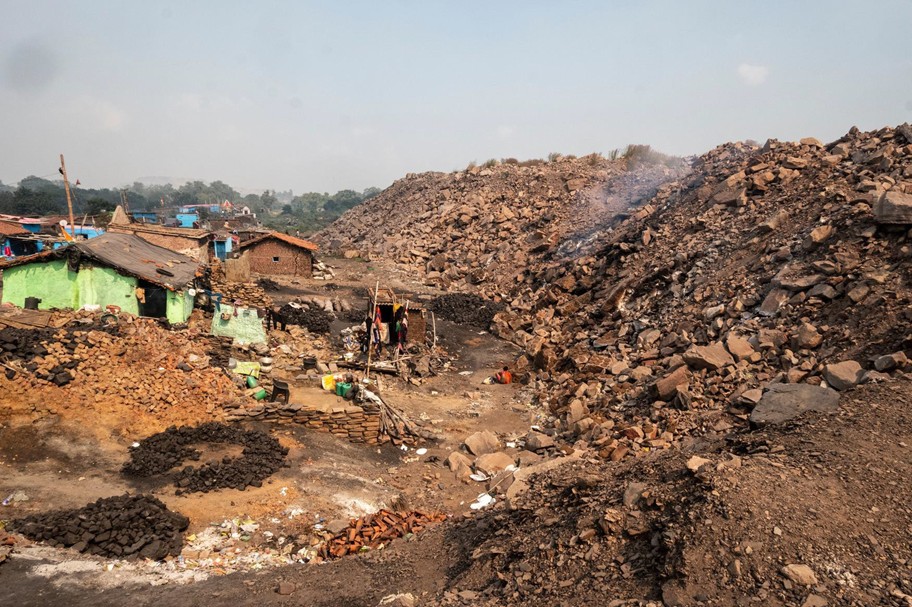
Chapter 3 : Narratives From The Field | Stories from Khalari
Khalari, located near Jharkhand’s “Mini London, Mccluskieganj,” is a small town where daily life revolves around the Dakra and KDH coal mines. The mining industry is central to the community, with many residents spending their days collecting coal from the dumps to sell in local markets for a modest income. But amidst the toil, the weekends bring a splash of excitement and a chance for fortune. The local weekend markets transform into arenas for the age-old tradition of cockfighting. This is not just a game but a passionate form of entertainment, a rare opportunity for the locals to unwind and test their luck. Small and large bets are placed on the cocks, making these matches the highlight of the week for many in the community.
Raising fighting cocks is an art in itself, and some villagers take it very seriously. These prized birds, often treated with great care and fed special diets, can fetch staggering prices—ranging from ₹20,000 to ₹80,000, depending on their size and the number of victories they’ve secured. The more battles a cock has won, the higher its value, and the greater the pride of its owner. The fights are governed by strict rules, ensuring a sense of fairness despite the intensity of the competition. For the villagers, this isn’t just about money; it’s about prestige, community bonding, and the thrill of the game. Life around Dakra and KDH mines may be defined by hardship, but moments like these show how the community finds joy and connection in the simplest of ways, blending tradition with their quest for a better tomorrow.

Each day in Khalari starts long before the first light of dawn breaks over the rugged terrain. The air is crisp but heavy with the faint scent of coal dust that lingers from the previous day’s activity. In the dim, pre-dawn glow, the silhouettes of the KDH mine loom like dark giants over the landscape. The narrow, uneven paths leading to the stone dumps are barely visible, but the villagers know them by heart. The quiet of the early morning is broken by the shuffle of footsteps and the low murmur of voices. Families stir from their modest homes, some constructed from mud and brick, others patched together with tarpaulin and tin sheets. A faint glow of lanterns and cooking fires flickers through cracks in the walls as people prepare for the grueling day ahead. Children rub sleep from their eyes, some clutching small sacks, ready to accompany their parents to the dumps. The older members gather their tools—hammers, shovels, and baskets—all worn and rusted from years of use. There’s no

room for leisure or delay; the race against the sun has already begun. For a family of eight, life around the any mine is all about survival. At the center of it is Ayo, the matriarch, whose weathered face and strong presence reflect the challenges she carries. Her name, meaning “mother in local language,” symbolizes her role as the backbone of the family, holding them together through it all. When we approached her, Ayo greeted us with suspicion, her voice sharp as she scolded us. Her protectiveness was clear—this land, this struggle, and her family were hers to shield. But after a

moment, she softened, cautiously agreeing to let us take just one photograph, with strict instructions not to include her family. “I am afraid,” she admitted quietly, her eyes nervously glancing toward her loved ones working nearby. Ayo shoulders the hardest tasks. She carries heavy coal chunks on her head, walking steadily over the uneven ground. Behind her, the rest of the family works tirelessly. The men break apart stones with simple tools like hammers and shovels, while the women and the child sift through the rubble, collecting every usable piece of coal. The work is exhausting, with the scorching sun overhead and coal dust clinging to their skin. By evening, they return home, their faces and bodies coated in soot, their earnings barely enough to buy basic necessities. Still, amidst the hardship, there are moments of relief.
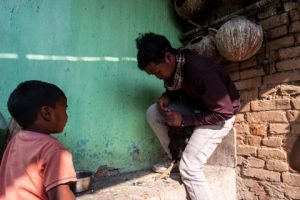
Over a simple meal, the family shares quiet laughter, briefly forgetting the weight of their struggles. Ayo’s love and resilience guide them through each day, one of coal chunks at a time, as they navigate the tough terrain of life around the mines. The villages around Khalari come alive every Saturday and Sunday with murgi ladhais or cockfights, a popular yet controversial tradition. Villagers from neighboring districts gather in large numbers to place bets, turning these events into high-stakes gambles. The matches are held just five kilometers from the local police station, yet authorities remain silent. Though these illegal activities happen right under the police’s nose, they choose to ignore it, locals say, hinting that regular commissions from organizers might explain the inaction. With most of Khalari’s population falling between the ages of 18-25 and 40-60, gambling has become a regular pastime for many. For a lucky few, it’s a way to earn quick money, while for others, it’s the thrill and tradition that keep them coming back to these spirited, underground events.
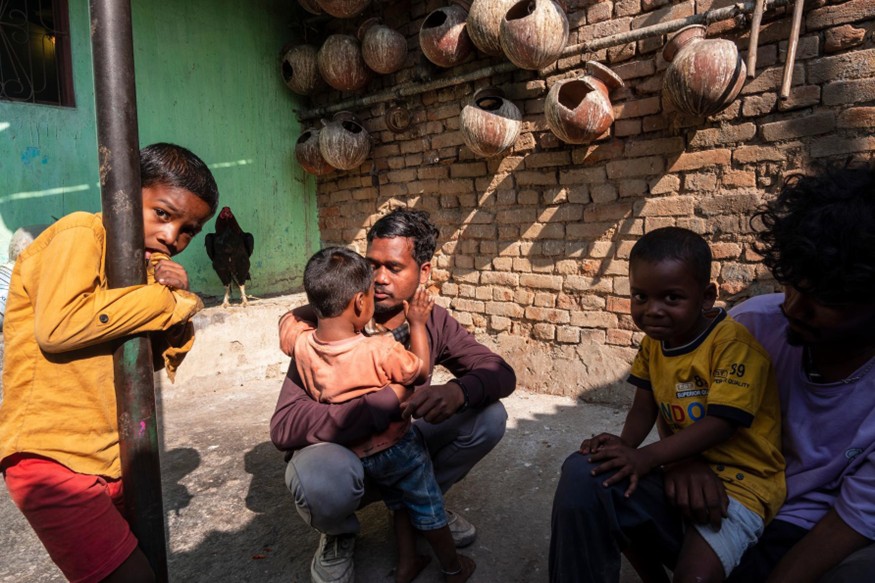
Chapter 4 : Narratives From The Field | Stories from Chatra
The dust never truly settles in Chatra. It clings to the skin, settles into the creases of clothes, and hangs in the air like an unshakable memory. It coats the leaves of the sal and mahua trees that line the roads, dulling their natural sheen. It mixes with sweat, turning into a stubborn layer of grime on the faces and hands of those who work the land. This district, tucked deep in the heart of Jharkhand, is more than just a land of forests and rivers—it is a land of coal. Beneath its soil lie seams of black gold, veins of fossilized energy that fuel industries and economies far beyond the reach of those who extract it. Chatra is home to several mines, each a gaping wound in the earth, where machines roar and workers toil from dawn to dusk. The Amrapali Coal Mine, an open-cast operation in Tandwa, sprawls across a vast stretch of land, its surface stripped layer by layer to unearth the coal buried beneath. Here, giant earthmovers and dumpers roll over once-fertile fields, their wheels carving deep scars into the soil. The coal from Amrapali makes its way to the Barh Super Thermal Power Station, where it burns to generate electricity, its flames licking at the very future of the land it was taken from.
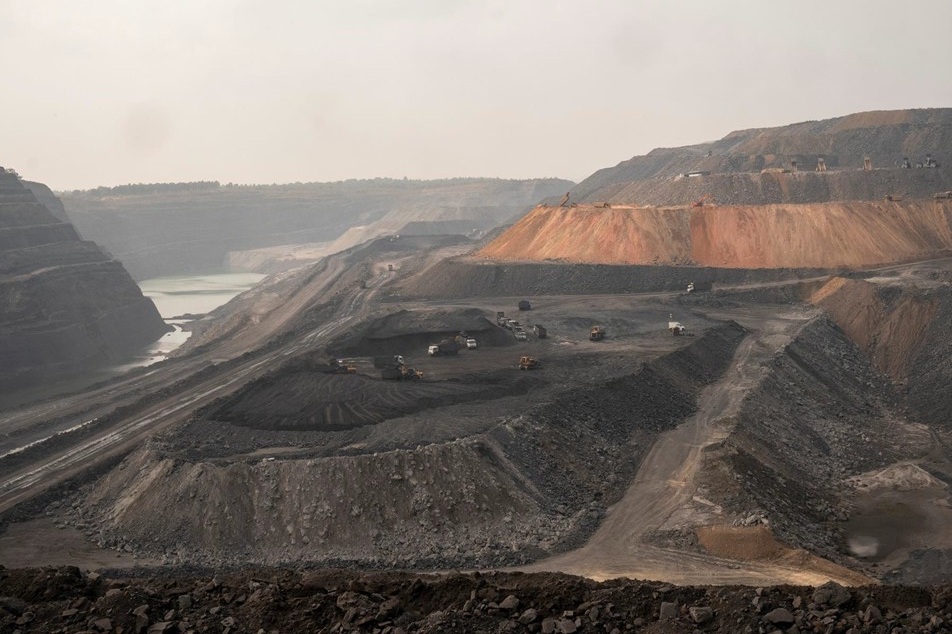

Further away, the Magadh Coal Mine hums with the relentless activity of Central Coalfields Limited (CCL). This mine, too, is a world of constant motion—trucks moving in and out, conveyor belts groaning under the weight of freshly dug coal, and workers navigating the terrain with the ease of those who have spent years among its treacherous slopes. Dust rises in thick clouds, turning the horizon into a hazy blur. Even the rivers, once lifelines for villages, now run black in places where coal dust settles into their beds. Then there is the Chandragupta Open Cast Project, another piece of the North Karanpura Coalfield, where the land bears witness to years of excavation. Here, the pits run deep, their jagged edges telling the story of relentless extraction. At
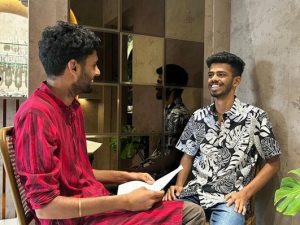
night, the landscape takes on an almost surreal appearance—artificial lights cast long shadows over the open earth, creating an eerie contrast between the glowing heaps of extracted coal and the darkness of the untouched land beyond.
Nilesh Kumar is a travel and documentary photographer based in Ranchi, Jharkhand. His work primarily focuses on the environment, indigenous communities, and the vibrant festivals of India. With a keen eye for both beauty and hardship, he captures stories that reveal the deep connections between people, culture, and nature. Since 2018, Nilesh has been traveling across India, documenting unique local traditions and landscapes. His passion for visual storytelling is fueled by a deep curiosity about the world—its untold stories, its struggles, and its resilience. A turning point in his career came in 2020 when he received the Sahapedia Photography Grant, allowing him to professionally pursue documentary photography. Through his lens, Nilesh Kumar continues to document stories that matter—those of communities in transition, environmental struggles, and cultural resilience. His work stands as a testament to the power of photography in bringing awareness to issues often overlooked
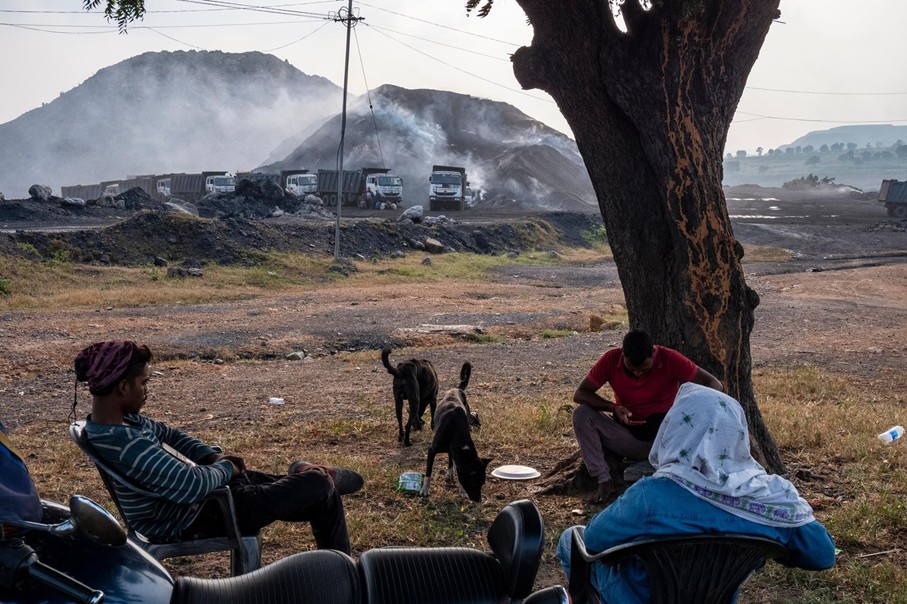
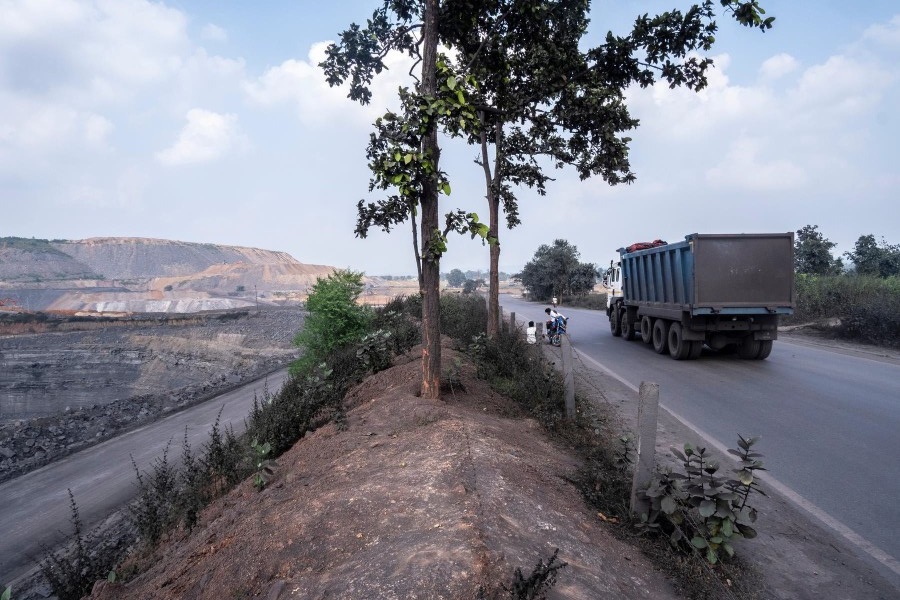
Chapter 5 : Narratives From The Field | The Rathole Mines
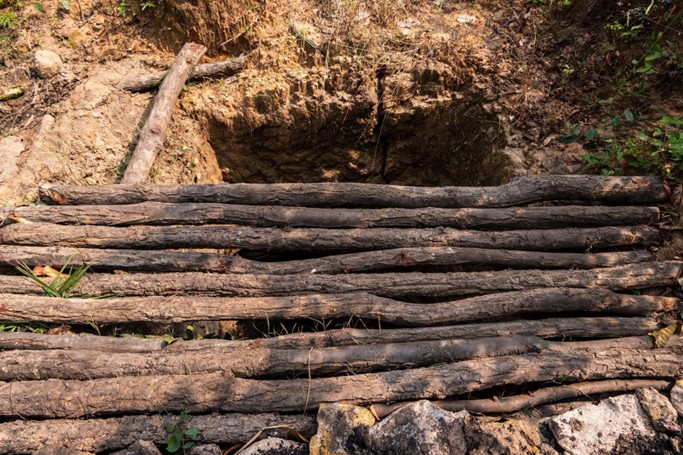
The thick canopy of Jharkhand’s forests is often described as serene—a green expanse sheltering diverse life and deep-rooted communities. But as I ventured deeper into Jharkhand forest area, I found myself amid a starkly different reality—one that reveals the price extracted from both the land and its people. Here, tucked away in the dense foliage and, shockingly, even along riverbanks, lay more than ten active rat-hole mines. Unlike the organized, large-scale coal operations that dot Jharkhand’s mineral belt, these mines hummed with quiet, covert activity. They were worlds unto themselves, stitched into the landscape as if nature itself had conspired to keep them hidden. Moving between them, I began to grasp the scale of this underground industry. The mines were scattered like rabbit burrows, their small entrances blending into the forest floor. From a distance, there was little to see—no towering machinery, no conveyor belts, no billowing smoke. But up close, the marks of human activity became clear: dirt trails where miners had trudged countless times, footprints pressed into coal dust, and hastily stacked sacks filled with freshly extracted coal. I counted more than ten such tunnels, each one no wider than a man’s shoulders, disappearing into the earth. Inside, miners clawed coal out by hand, armed with little more than pickaxes and sheer will. The deeper they dug, the more precarious their world became— fragile wooden beams held up unstable ceilings, and oxygen levels dipped as they burrowed further. There were no helmets, no protective gear, no emergency exits. Just darkness, dust, and an unspoken understanding that a single mistake could seal them inside forever.
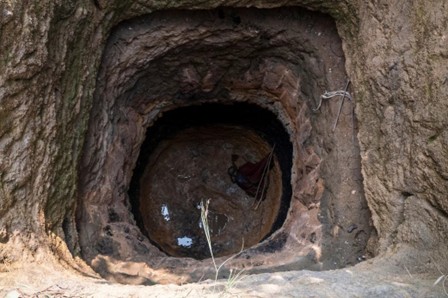
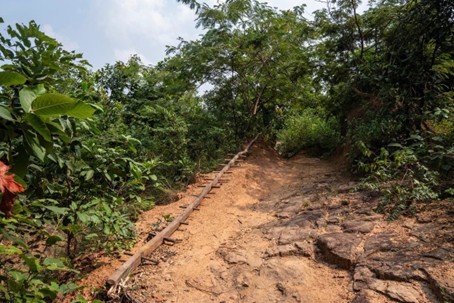
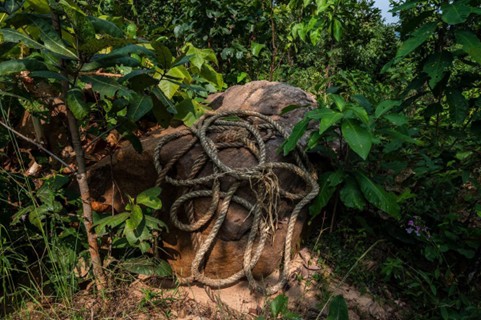
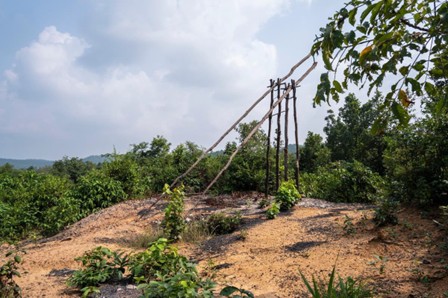

Independent Voices on Mining Documentation
Parul Kunkal
Ranveer Bhagat
Arvind Lakra
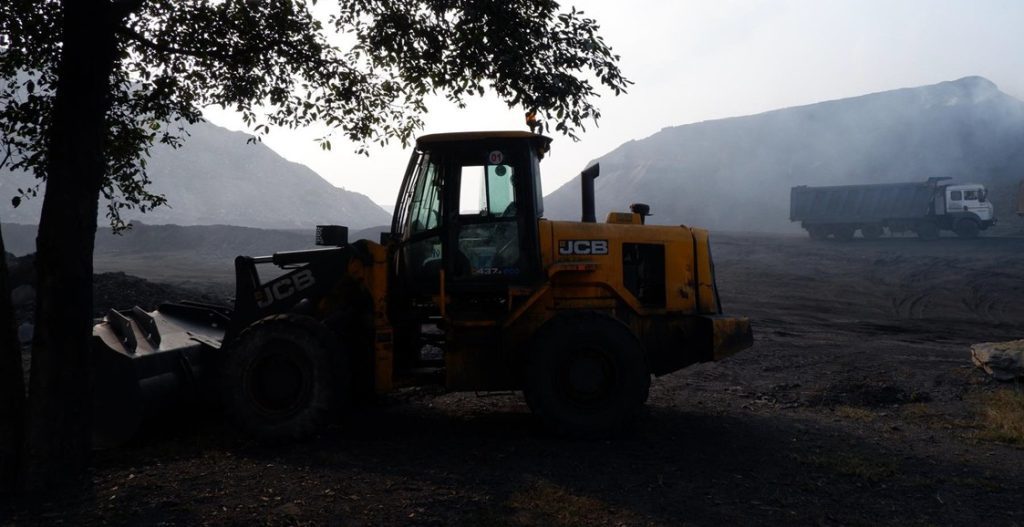
This project is supported by the Danish Siddiqui Foundation under the DSF Rising Reporters initiative and may be published under a Creative Commons license, with appropriate credit to both the author and the Foundation. All images are © Ishan Banerjee.
